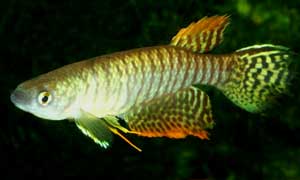Steffen, Simp. flagellatus is a beautiful species, unfortunately it seems to be uncommon in the hobby. It is no doubt a species in its own right, even if for many years, it was considered as part of Simp. flavicaudatus. I've never seen either species live here but that doesn't mean I won't give them a try.
Moema quiii is a beautiful and large species. I think the name is synonymous with Moema ortegai, but still, its a worthy species for anyone with enough space to house them. They prey on Aphyolebias rubrocaudatus 153 in the wild if I remember what was said on Huber's article in the Nov 2003? issue of Freshwater and Marine Aquarium (FAMA).
I will probably obtain Simp. hellneri eggs sometime early next year, if news is favourable from my friends and I'll let you know regarding this.
Pituna compacta is an interesting species and well worth the time to handle. I haven't tried it yet but when tank space is available, I'll give it a shot.
Of the other species on your list, I'd say I have a soft spot for Chrom. lugens. It is a unique species with its dark dusky colours, but as always, uncommon in the hobby.









 Reply With Quote
Reply With Quote










 I leave myself at everyones mercy for stating the obvious. Haha
I leave myself at everyones mercy for stating the obvious. Haha
Bookmarks